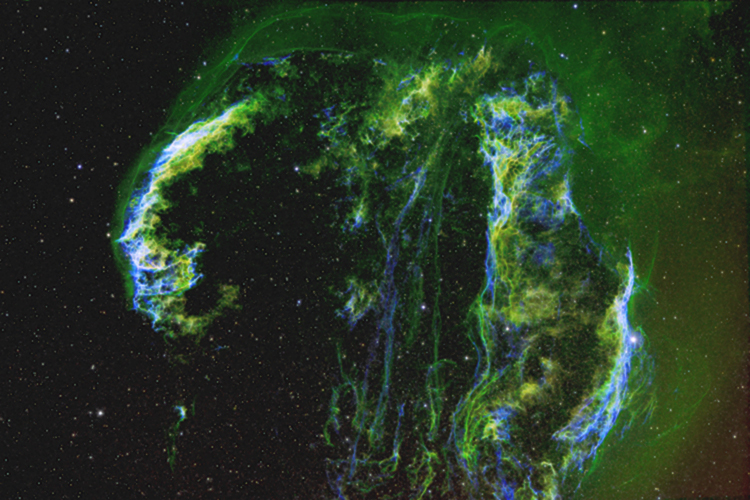|
North is to the top.
These false color images were acquired with Ha, SII and OIII filters
mapped to the RGB channels respectively. The colors of top two mages
more closely follow the Hubble Palette, with the color channels
stretched to about equal levels. The presence of sulfur,
hydrogen and oxygen are clearly shown. Red indicates the
presence sulfur, green hydrogen and blue oxygen. However, it looks
like the sulfur is mainly present where there is also hydrogen and
oxygen, creating the white areas.
With no color
manipulation, the image would be basically green, due to the
dominance of hydrogen.
The bottom image was
additionally processed to produce a
color motif made
popular by the Hubble imaging team.
=============
These wisps of gas are
all that remain visible of a Milky Way star. Many thousands of years
ago that star exploded in a supernova leaving the Veil Nebula. At
the time, the expanding cloud was likely as bright as a crescent
Moon toward the constellation of Cygnus, visible for weeks to people
living at the dawn of recorded history. The remaining supernova
remnant lies about 1400 light-years away and covers over five times
the size of the full Moon. The bright wisp on the right is known as
the Witch's Broom Nebula and can be seen with a small telescope. The
Veil Nebula is also known as the Cygnus Loop.
Source: NASA
APOD
|

